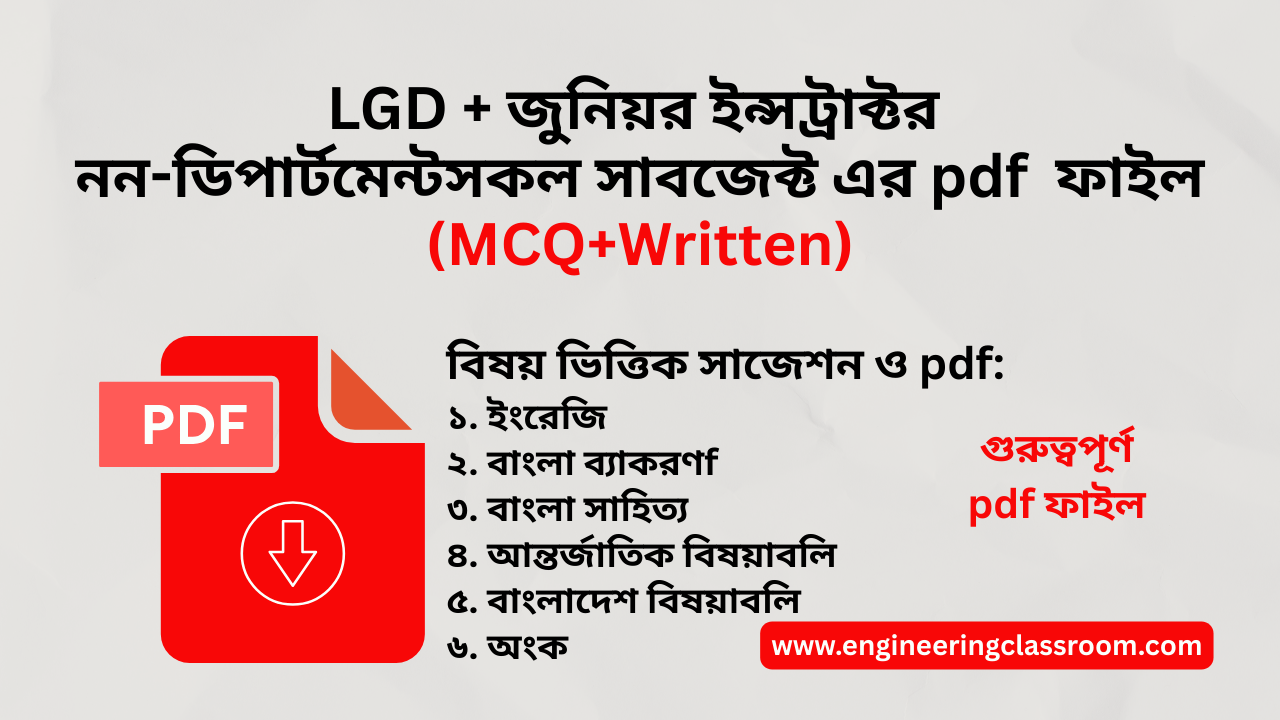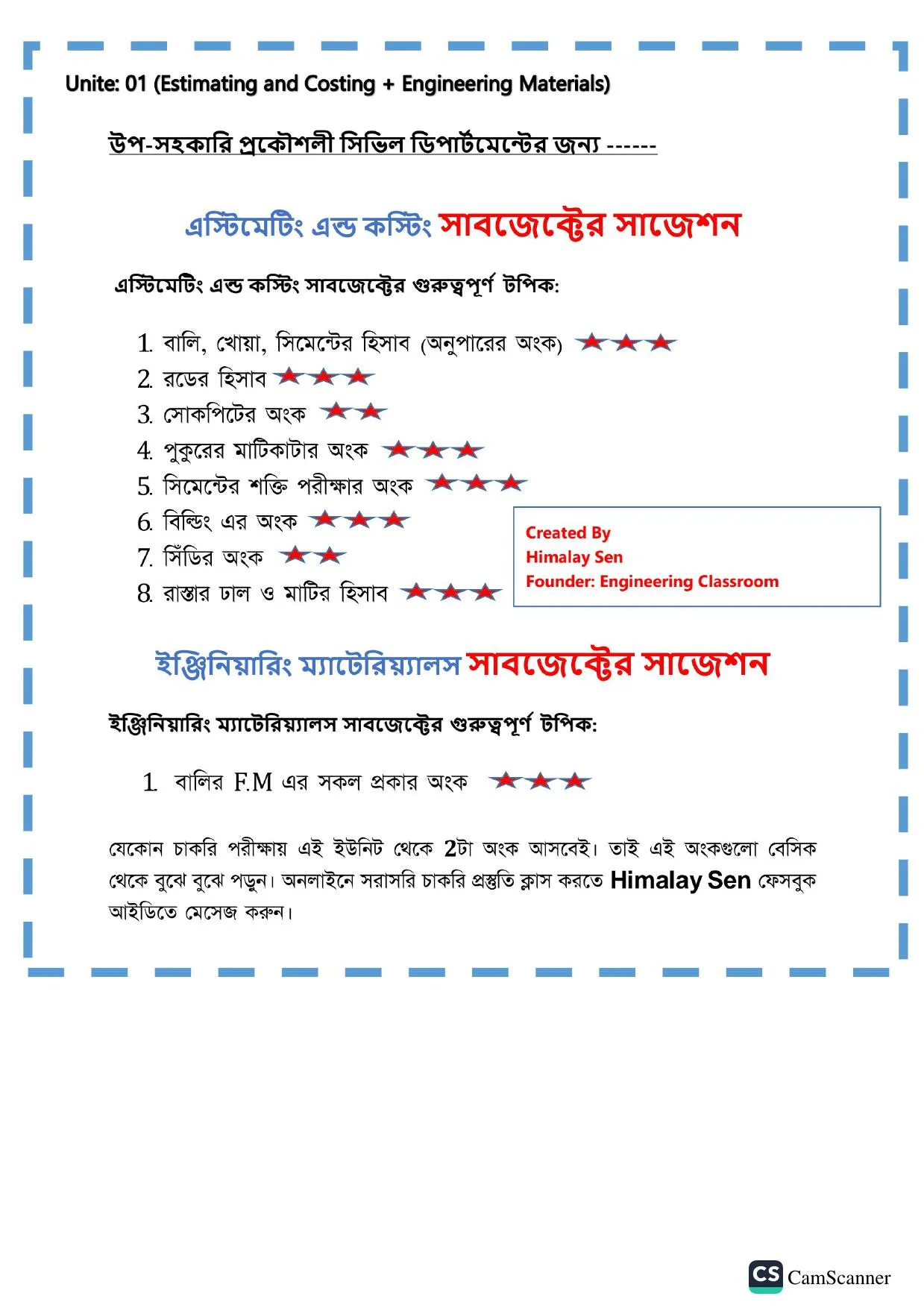MCQ
1281. The cross-section of a road partly in banking and partly in cutting is shown in the given figure. The area of the shaded portion is
b-rd) 2/(r-s)
b-rd) 2/(r+s)
1/2(b+rd) 2/(r-s)
b-rd) 2/(s-r)
1282. If the formation level of a highway has a uniform gradient for a particular length, and the ground is also having a longitudinal slope, the earthwork may be calculated by -
Mid-section formula
Trapezoidal formula
Prismoidal formula
All the above
1283. In the mid-section formula
The mean depth is the average of depths of two consecutive sections
The area of mid-sections is calculated by using mean depth
The volume of the earth work is calculated by multiplying the mid-section area by the distance between the two original sections
All of the above
1284. While estimating the qualities for the construction of a building, the correct metric unit is-
Metre for length
Cubic metre for area
Square metres for volume
Litre for capacity
1285. The excavation exceeding 1.5 m in width and 10 sq.m in plan area with a depth not exceeding 30 cm. is termed as
Excavation
Surface dressing
Cutting
Surface excavation
1286. Pick up the excavation where measurements are made in square metres for payment.
Ordinary cuttings up to 1 m
Surface dressing up to 15 cm depths
Surface excavation up to 30 cm depths
Both (b) and (c)
1287. The plinth area of a building not includes
Area of the walls at the floor level
Internal shaft for sanitary installations up to 2 sq m. in area
Lift and wall including landing
Area of cantilevered porch
1288. Pick up the correct statement from the following:
In order to check up the average depth of excavation, 'Dead man s' are left at the midwidths of borrow pits
The earthwork calculation in excavation is made from the difference in levels obtained with a level
The earth work in excavation to form the road embankment includes the formation of correct profile and depositing the soil in layers
All the above
1289. The value of 'B' of Indian type W.C. shown in the given figure is:
45 cm
50 cm
30 cm
25 cm
1290. cement concrete road is 1000 m long, 8 m wide and 15 cm thick over the sub-base of 10 cm thick gravel. The box cutting in road crust is
500 m3.
1000 m3
1500 m3
2000 m3
1291. Pick up the correct statement from the following:
If the bed level is above N.S.L. the canal is called fully in baking and the berms are designed as 3 d where d is full supply depth of water (F.S.D.)
Area of canal in cutting BD + Sd 2 where B-bed width, d depth of cutting and S is the side slope
If F.S.L. is above N.S.L the canal is called partly in cutting and partly in filling and berms are designed as 2d where d is full supply depth
All the above
1292. As per Indian Standard Specifications, the peak discharge for domestic purposes per capita per minute, is taken
1.80 litres for 5 to 10 users
1.20 litres for 15 users
1.35 for 20 users
All the above
1293. While estimating a reinforced cement structure, the omitted cover of concrete is assumed
At the end of reinforcing bar, not less than 25 mm or twice the diameter of the bar
In thin slabs, 12 mm minimum or diameter of the bar whichever is more
For reinforcing longitudinal bar in a beam 25 mm minimum or diameter of the largest bar which is more
All the above
1294. Pick up the incorrect statement from the following:
Lead is the average horizontal straight distance between the borrow pit and the place of spreading soil
The lead is calculated for each block of the excavated area
The unit of lead is 50 m for a distance upto 500 m
The unit of lead is 1 km where the lead exceeds 2 km
1295. Cost of fittings and their fixing is specified for the following sanitary fittings
Water closets
Flushing pipes
Lavatory basins
All the above
1296. The brick work is not measured in cu m in case of-
One or more than one brick wall
Brick work in arches
Reinforced brick work
Half brick wall
1297. For the construction of buildings, the subheads of the estimate are
Earthwork, Concrete work, Brick work
Brickwork, Stone work, Roofing
Brickwork Flooring, Wood work, Steel work
All the above
1298. Pick up the incorrect statement from the following:
No deduction is made for the volume occupied by reinforcement
No deduction is made for the openings upto 0.1 sq.m
No deduction is made for volumes occupied by pipes, not exceeding 100 sq.cm in crosssection
None of these
1299. The assumption on which the trapezoidal formula for volumes is based, is-
The end sections are parallel planes
The mid-area of a pyramid is half the average area of the ends
The volume of the Prismoidal is over-estimated and hence a Prismoidal correction is applied
All the above
1300. Pick up the correct statement from the following:
Pointing is measured in sq.m
Plastering is measured in sq.m
Glazing is measured in sq.m
All the above















